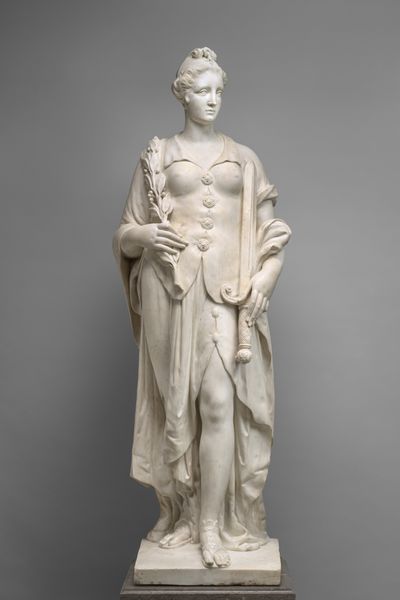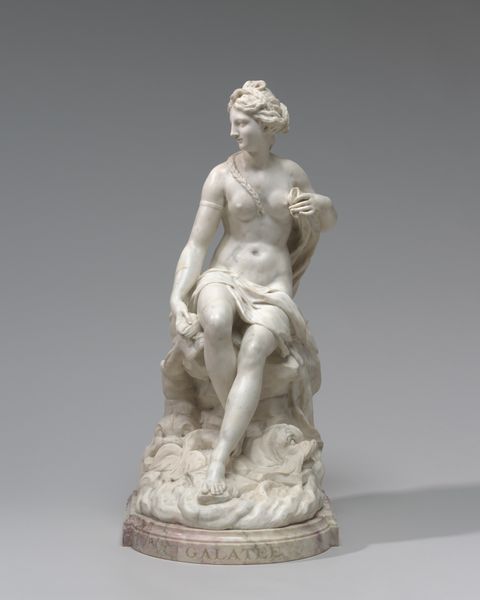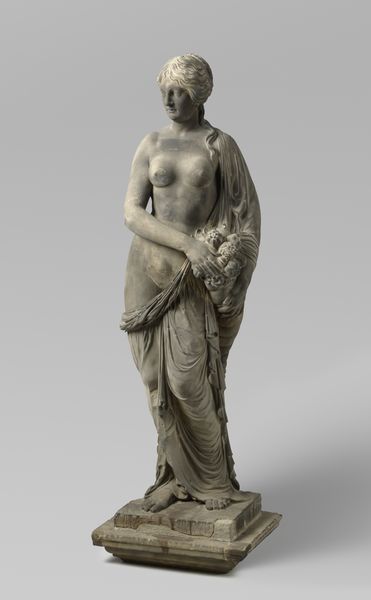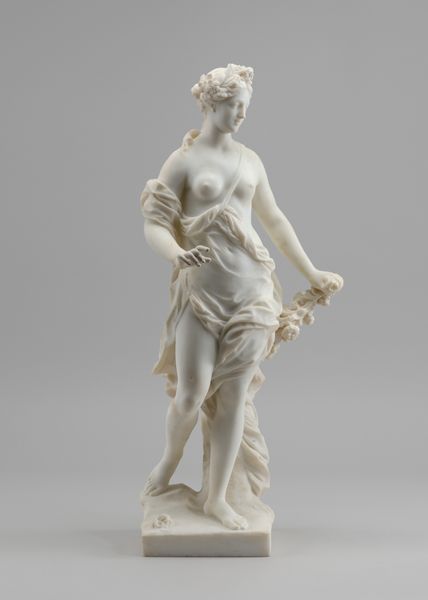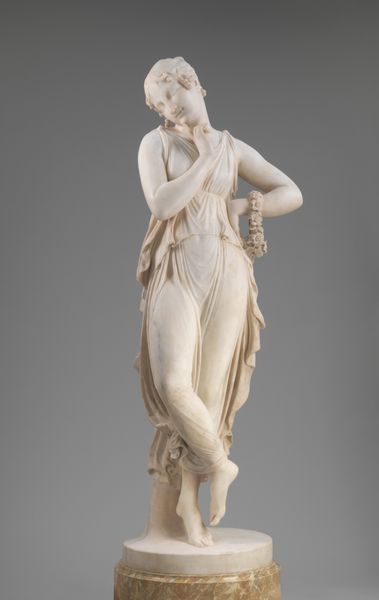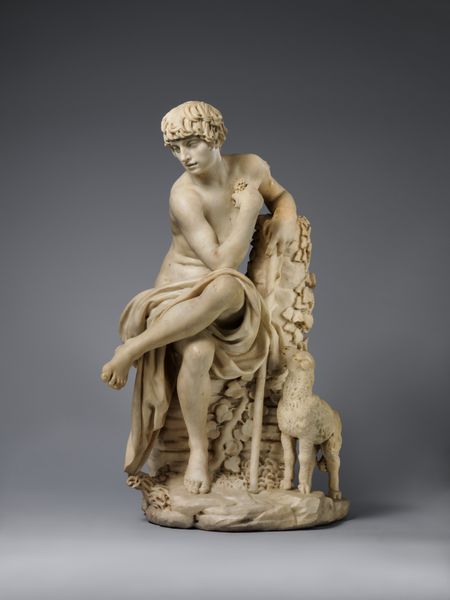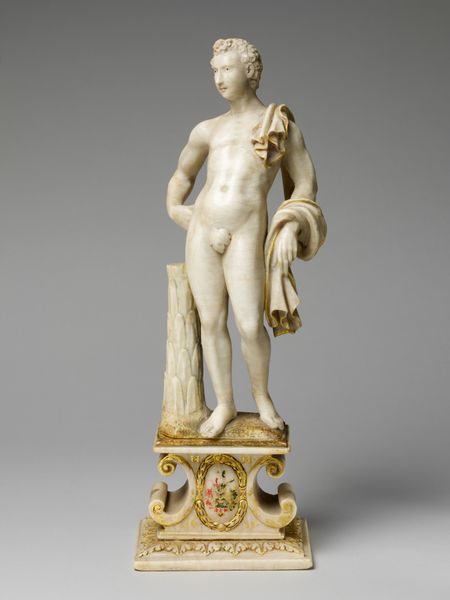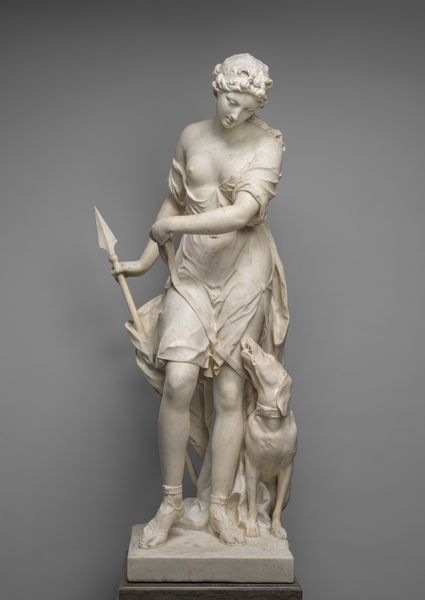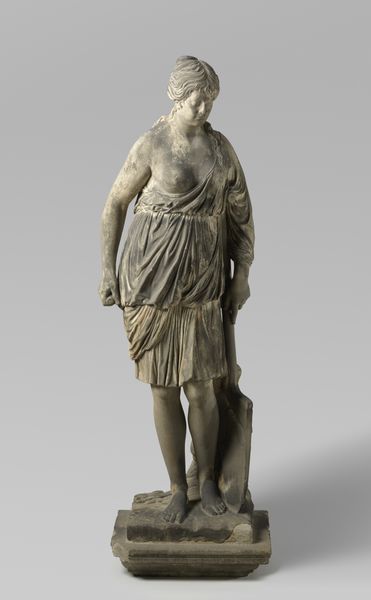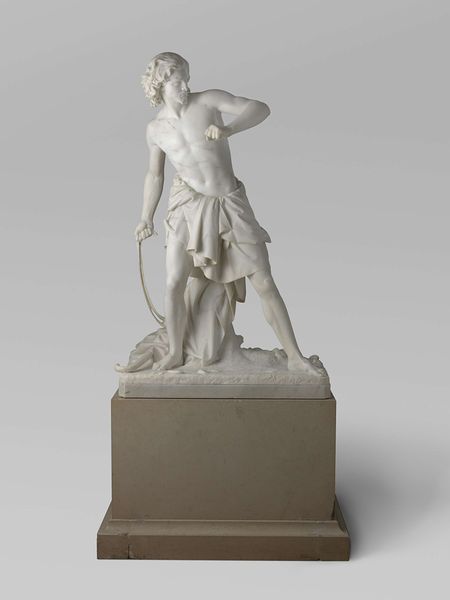
sculpture, marble
#
portrait
#
sculpture
#
classical-realism
#
classicism
#
sculpture
#
history-painting
#
academic-art
#
marble
Copyright: National Gallery of Art: CC0 1.0
Editor: This is a marble sculpture of Raphael by Thomas Crawford, no date given. The detail is impressive, especially in the clothing. What strikes me is the sort of confident poise; he’s very idealized. What aspects stand out to you? Curator: Indeed. Considering this marble work through a Formalist lens, the line is particularly interesting. Note how Crawford uses the implied lines of the body – the gaze, the angle of the palette – to lead the eye around the form. The use of drapery introduces dynamism; how does that contribute to the work overall, in your view? Editor: I see it adding to the overall movement of the piece. The folds cascade around him, but it seems very contained, not chaotic. Everything works to lead you back to the central figure and that focused gaze. Is it correct to relate this treatment of form with the classicist approach? Curator: Precisely. This careful arrangement, what one could call the 'syntax' of the sculpture, directs us to consider the harmony between the artist’s intent and the materiality of the sculpture itself. It isn't about the representation alone, but rather about the very means by which that representation is achieved through skillful manipulation of marble. And note how the scroll mimics and supports the drapery to create stability. Editor: It's amazing how much the shapes and structure communicate! It seems almost self-contained, not reliant on anything else to convey meaning. Curator: A fitting conclusion. Formal analysis illuminates how art's inherent structure, irrespective of historical context, offers an independent sphere of meaning. Editor: I hadn't really considered how the sculpture's forms in themselves give us insight into the work as a whole, and contribute to meaning. I'll definitely look at sculptures differently now!
Comments
No comments
Be the first to comment and join the conversation on the ultimate creative platform.



